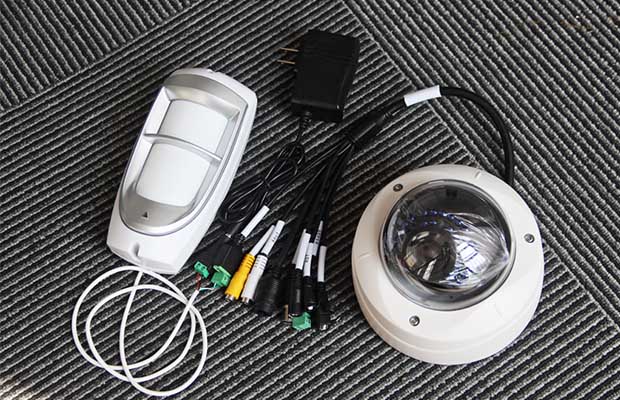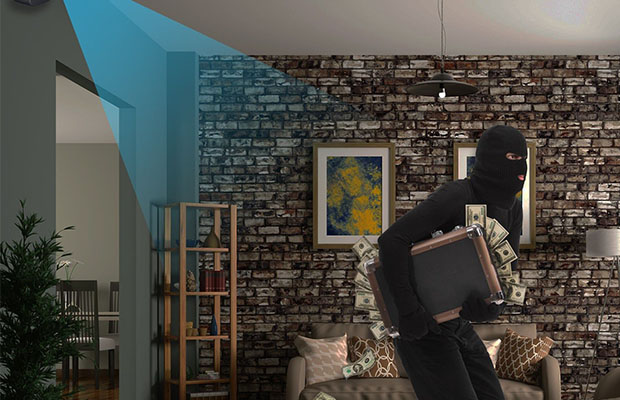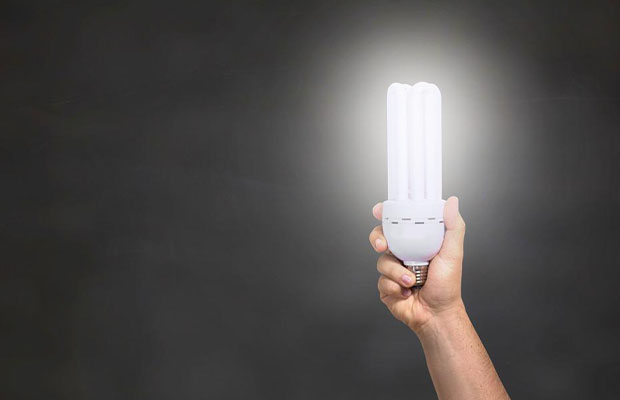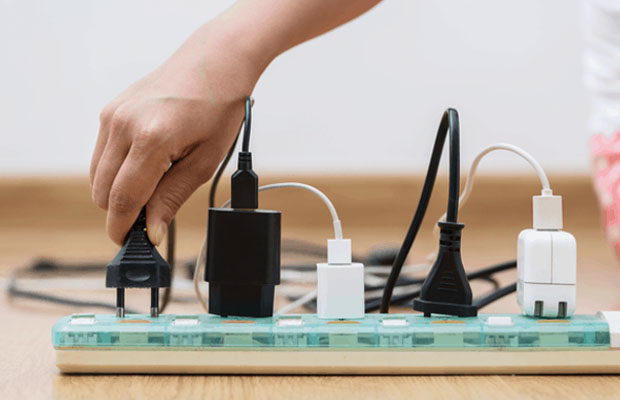You probably have heard of “PIR cameras” or “PIR functions”. But what is a camera PIR detection?
PIR (Passive Infra-Red) detection is a technology that uses light emitted from nearby objects to detect movement or intruders. PIR is the result of years of product innovation as security companies look for new and inventive ways to identify intruders in domestic and commercial facilities.
Continue reading for more information on how PIR detection works.
Table of Contents
What Is PIR?
An overview of the PIR feature, including how it reduces false alarms and how it contributes.
PIR is an abbreviation for passive infrared sensors. In alarm systems, this sensor is typically used to track the movement of a human body, which emits heat in the infrared spectrum. On Foscam cameras, the feature is turned on by default. PIR technology helps cameras automatically recognize moving objects and human body heat. This helps reduce the number of false alarms that would typically be brought on by insects or falling debris like leaves.
What Are PIR Cameras?
The PIR cameras are heat and thermal sensing detection technology, which was developed to allow cameras to have correct triggers.
Many cameras record when the motion sensor is triggered, meaning it can be anything from a cat to a car or a person.
The detection process is different when a PIR or passive infrared camera is used, though. True Detect heat-based thermal sensing PIR motion detector is designed to capture activity with fewer false triggers reliably. These cameras were made to limit triggers to moving targets who emit heat, such as animals and humans, instead of triggering the camera due to a car driving by.
How Do PIR Sensors Function?
Every object that has a temperature higher than absolute zero emits radiation. Heat energy is one way that this energy is expressed. Much of this radiation is invisible to the human eye because heat radiates at infrared wavelengths, but it can be detected by electronic devices made especially for this purpose.
Using passive infrared technology, a passive infrared sensor can identify the infrared light emitted by a warm object.
This technology is used in conjunction with a relay—a circuit component that passes across two contacts—in the context of PIR sensors in burglar alarms to activate an alarm. The alarm is activated when the PIR sensor detects movement because it engages the relay, which breaks the circuit and activates the relay.
At their most basic, positive differential change detection is how PIR sensors operate. The detection range is determined by the field of vision of two infrared-sensitive slots that are placed in front of the lens. In contrast to when they are “active,” both slots sense the same amount of ambient infrared, which is naturally emitted by all objects in the space. One of the slots detects an object, person, or animal moving through the detecting region before the other, resulting in a positive differential change as it enters and a negative differential change as it leaves.
When the PIR sensor detects movement, an alert is sent to the alarm panel, which triggers the alarm. A material that can lessen the effects of ambient temperature and humidity, such as a metal like silicon, must completely enclose the PIR sensor itself.

Must-have Features Of Pir Cameras
You must consider your needs for convenience and security when purchasing a PIR security camera. You can get there by utilizing the features listed below.
PIR security camera with HD resolution – Higher resolution, as a starting point for PIR IP camera systems, refers to an improvement in image quality and displaying details. The ability to capture what matters or lose the details needed to identify people or vehicles can be positively impacted by upgrading from 2MP to 4MP.
PIR cameras with two-way audio – You can use a smartphone app to communicate with family members or frighten away potential intruders in addition to hearing sounds captured in the videos.
PIR cameras with good night vision – Numerous PIR cameras have the designation “night-vision compatible.” The quality, though, varies. Look for PIR sensor surveillance cameras with 33-foot-range or greater night vision to ensure that they can see in the dark.
PIR spy cameras – You should think about passive infrared spy security cameras if you want to monitor the nanny while she is away, confirms suspicions, or obtain solid evidence regarding certain matters.
Adjustable sensitivity for PIR sensor – Are you receiving numerous push notifications, email alerts, and clips of cars driving by? This function fills that role. You can modify the PIR camera monitoring range based on your actual needs or the different times of day thanks to PIR detectors with adjustable sensitivity.
Benefits Of Pir Cameras
PIR motion sensors can be very useful in both residential and commercial settings. PIR cameras are often compared to motion sensor cameras, but PIR has a strong benefit over standard motion detection – the reduction of false alarms. As they simply detect all motion, motion detection cameras cannot tell the difference between, say, leaf movement and a human intruder. PIR only picks up heat changes, resulting in more accurate triggers; common false triggers like bugs, wind movement, leaves, etc. aren’t picked up, saving you time and money on monitoring costs.
PIR cameras are primarily used to assist in the protection of vacant spaces in commercial settings and on construction sites. Although alarms aren’t exactly a preventative technology, they can be used to launch a response if intruders manage to get past your initial security measures. PIR technology can be installed in the following key areas to find unauthorized guests:
- Back doors, entrances, and access points
- Blind or hidden places near landscaping
- Near windows
- Site perimeters and car parks
How Can Pir Be Used To Lower False Alarms?
For instance, PIR sensors work well for figuring out whether an intruder is present or whether it’s just an animal. In general, they can lower false alarm rates and have a higher accuracy level. To further lessen the possibility of erroneous alarms from your PIR motion sensors, you should pay attention to some minute details.
Instead of the price or the quality of the alarm, the placement of the alarm and sensors will result in a large number of false alarms. This means that you should install wireless motion detector alarms in locations that maximize their effectiveness while minimizing false alarms.
Your alarm can still be triggered by uncomplicated events like air blowing close by or a rodent moving across the floor.
The best time to test your alarm placement is right after a false alarm. Radiofrequency interference and equipment malfunctions may also result in false alarms. Initially, rule out any of these problems. When in doubt, double-check the camera’s positioning. Check the area close to the motion detector to see if it’s setting off alarms at random.
About Pir Cameras In Action
PIR technology is used by Clearway, including in our CCTV tower setup. Large outdoor spaces, particularly construction sites, sizable vacant areas, and parking lots, can be effectively monitored with the help of our CCTV tower cameras. As you’ll see from the diagram, our inView CCTV tower can connect up to 8 remote, wireless mounted PIR sensors that can be 100 meters away from the tower.
A live audio challenge can be used from the monitoring station when a PIR is activated by an intruder to talk to the intruders. Each PIR will instruct the tower’s camera to rotate, zoom, and focus on the source of the activation upon detection. Our CCTV Tower is mains powered and has a built-in, continuously operating battery for recording and remote access.
PIR Motion Detecting Cameras Vs. Pixel Motion Detecting Cameras
Since motion is determined by a change in pixels, the scenario below shows how Pixel Motion Detection frequently produces erroneous triggers.
When using PIR Motion Detection Cameras, movement is defined as the identification of a warm, moving object within the image that has been sized and temperature-optimized for humans. The PIR detection range is 10 meters (32 feet).
This DVR combines both technologies: for Recording or Push Notifications both PIR Detection and Pixel Detection must be “true” to ensure maximum reliability in recording and notification.
Read More: Can A Surge Protector Go Bad?




